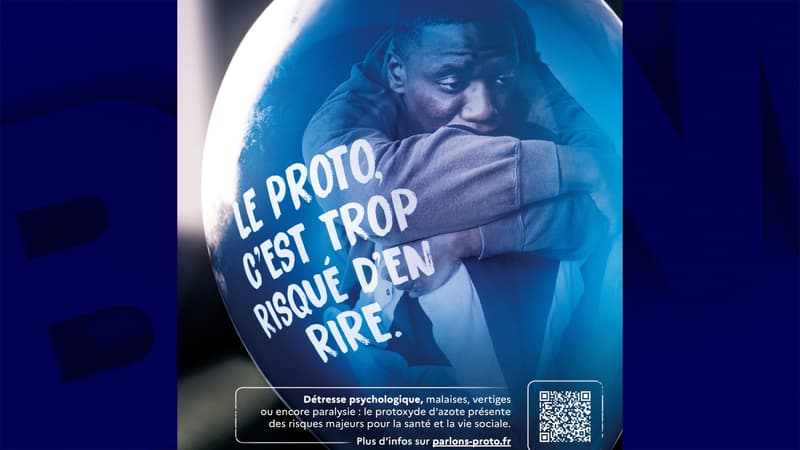Today, Pierre uses crutches to get around. This young man who lives in the Paris region began using nitrous oxide, also known by the names “proto” and “laughing gas,” about a year ago. Then he consumed it mainly on weekends and now he has partially lost the use of his Faced with these risks, the Regional Health Agencies (ARS) of Île-de-France and Hauts-de-France launched an awareness campaign called “proto, It is too risky to laugh at it.”
Like most other consumers, for Pierre “it’s more: I want to party, this will contribute to my party,” he explains to BFMTV.
Neurological disorders, strokes, burns…
Last August he was admitted to the hospital for serious neurological problems and remained hospitalized for several weeks. “It started with a little tingling. He had stopped taking nitrous oxide, but it still got worse and one day he couldn’t walk anymore, he was vomiting.
“I knew the dangers very well, but I told myself it wasn’t going to happen to me,” he confesses before admitting: “Frankly, it’s not worth the risk.”
Nitrous oxide can cause neurological and cardiovascular damage (up to a stroke), psychological manifestations, trauma related to falls or even burns. In France, almost 14% of young people have already consumed it, according to data shared by the ARS of Île-de-France and Hauts-de-France within the framework of its campaign.
“It has an image that is not illegal, festive, it is ‘for a laugh’ and in fact this campaign can expose the general public to the fact that there are risks. We should not hesitate to come and ask for help or even ask questions. questions “explains Maelle Cerf Thery, psychologist responsible for the Young Consumer Consultation (CJC) at the Saint-Denis hospital, in Seine-Saint-Denis.
According to health professionals, the data related to nitrous oxide is probably underestimated. For Guillaume Grzych, metabolic biochemist at the Lille University Hospital, “the medical profession has difficulties in recognizing clinical signs” and it is necessary to intensify the work of informing caregivers.
Very easy access
For Joëlle Laugier, head of the addictions service at the Saint-Denis hospital center, this problem “has especially affected young people since the Covid era. We also see it increasing because access to the Internet is provided in much higher doses.” than before,” shares Joëlle Laugier, head of the addictions service at the Saint-Denis hospital centre.
Guillaume Grzych explains that the most common formats are no longer the siphon nozzles used in pastry and diverted from their initial use, but rather larger cylinders, which can contain the equivalent of about 80 capsules. The nitrous oxide specialist also reports on a format that appeared a few months ago, called “tank”, which can contain up to 500 capsules.
In reality, these new formats have no other use than to promote the inhalation of nitrous oxide. To the point that some bottles are even flavored: for example, we find strawberry or coconut flavor. All authorized for sale, on websites based abroad or in the back rooms of certain food stores.
An order limiting sales to boxes of 10 small capsules should go into effect on January 1. However, its effectiveness could be thwarted by the fact that this trade, although legal until now, has developed rather discreetly. In Paris, consumption by minors in public places has been prohibited since May, in several districts.
The United Kingdom, for its part, has recently adopted a more radical decision: the total prohibition of the possession of this substance for recreational purposes, something that associations and caregivers in France are requesting.
Source: BFM TV


